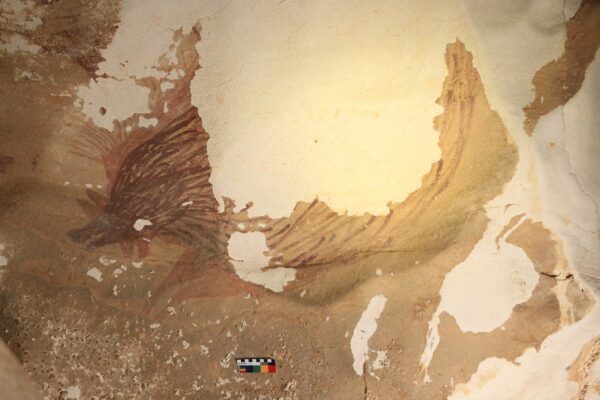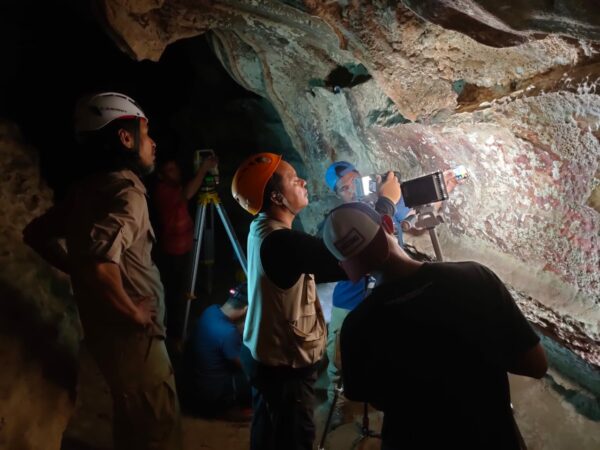Indonesia’s Early Rock Art Damaged by Climate Change
Cosmos Magazine reports that climate change is rapidly weathering rock art at the Maros-Pangkep site in Sulawesi, Indonesia, which dates to at least 44,000 years ago.
Local archaeologists and site keepers for the ancient artworks of Maros-Pangkep in Sulawesi, including intergenerational custodians, told the scientists that the rock art “is disappearing now faster than any other time in living memory,” says lead author Jillian Huntley from Griffith University, Australia.
The paintings are dated up to at least 44,000 years ago, during the Pleistocene era. Rivalling European cave art, the illustrations of hunting scenes and mystical beings are thought to be the oldest evidence of figurative art and artistic creativity on the planet.


Upon investigating the chemistry of the limestone rock face, Huntley and colleagues were surprised to find pervasive evidence of salt crystallisation (haloclasty). “When I saw how high some of the chemical indicators for salts like gypsum were, I was astonished,” she says.
The salts chemically weaken the rock and mechanically separate the surface of the panels from the limestone wall and ceiling, causing the rock art to flake off the walls.
The team conducted further analysis of the types of salts to understand what was causing them to form and reviewed paleoclimate records. Results suggest natural geological weathering processes in the tropical region are being exacerbated.
“These processes are accelerated by increasing temperatures, more extreme weather,” Huntley explains: “more consecutive dry days, prolonged droughts, water from storms and flood and increasing humidity from standing water in floods and food production such as rice field and aquaculture ponds.”
Next to extensive quarry mining of limestone, the weathering poses the greatest threat to the preservation of the irreplaceable cave art, the authors say.
“The amount we have learned from studying this rock art just in the last few years is staggering,” says Huntley. It “houses the earliest yet known animal depiction and the first complex narrative scene yet found. These are important markers of people’s cognitive and social capacities.”
Another example of the wide-ranging impacts of climate change, the discovery underscores the importance of research and conservation efforts in Maros-Pangkep and across Australasia, where more sites are being discovered every year, she adds.
“We are in a race against time to document and learn from this rock art before it is irrevocably damaged.”





